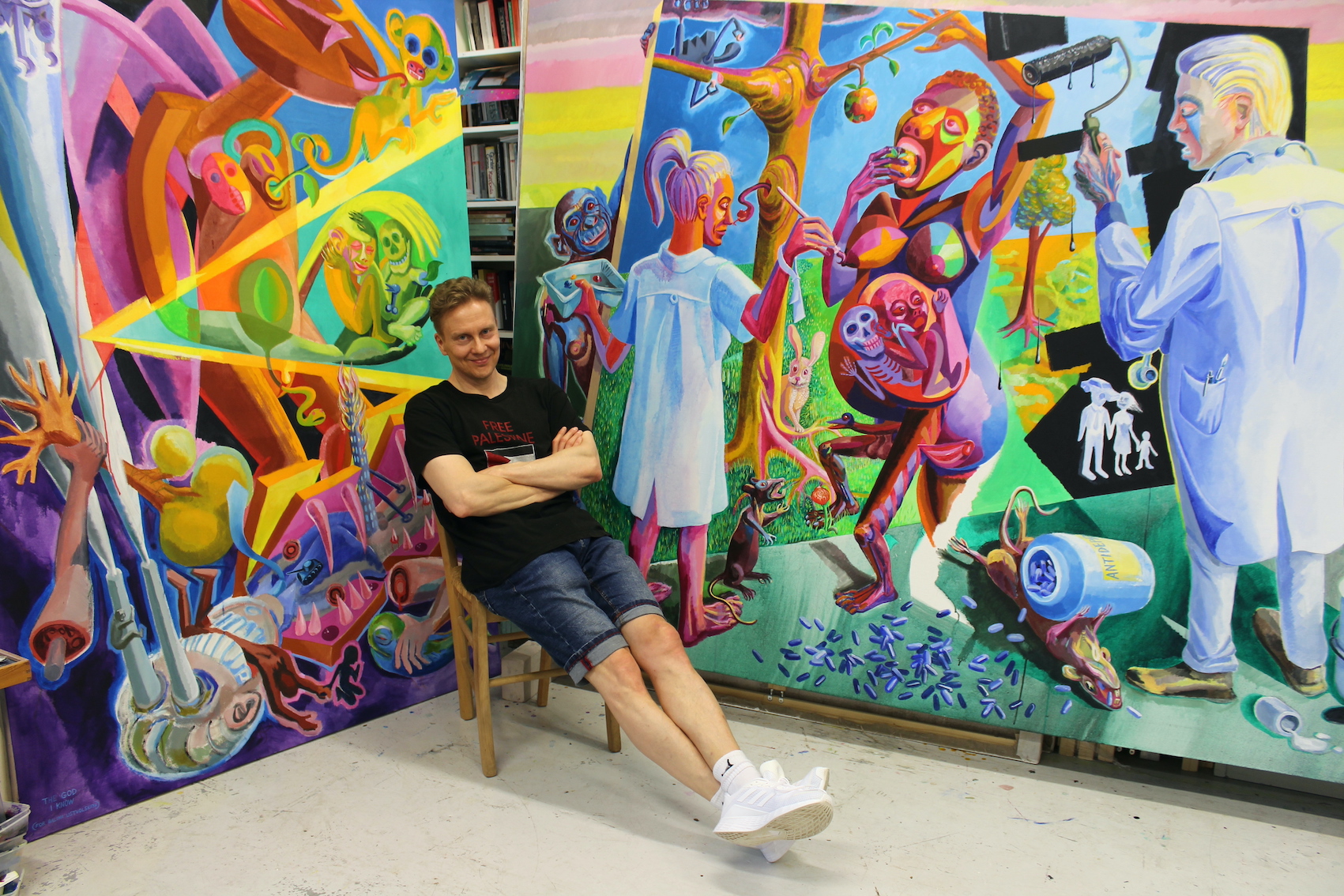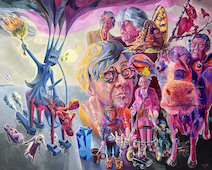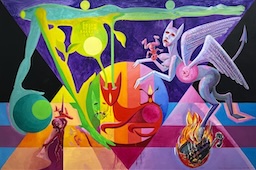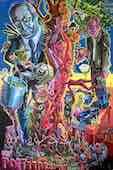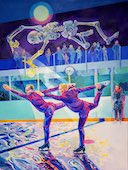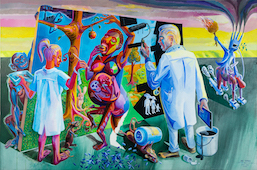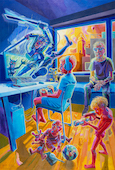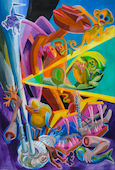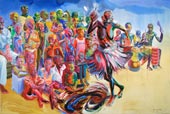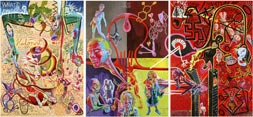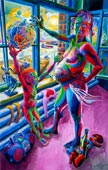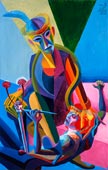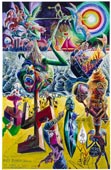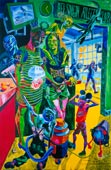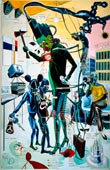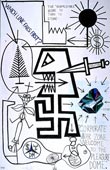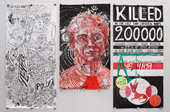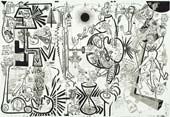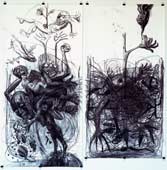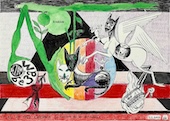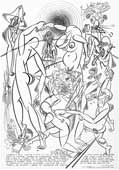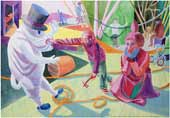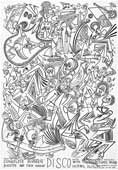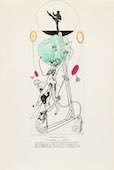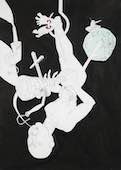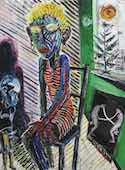A few big ones on paper:
|
Portraits
and Single-image allegories were my main genres of
painting since my teens. I love these traditions and
try to continue them and prove that they are still
valid forms.
Sometimes it's of course hard to tell whether a painting should be called an allegory or a portrait, because many portraits — and landscapes and still life paintings too — have allegorical elements in them too. My simple solution to this is that the paintings that I've painted from model, paintings and drawings that are based on direct observation of a real person or scene are first and foremost portraits. And the paintings that depict imaginary scenes are allegories. Still, sometimes these categories overlap quite a bit, since occasionally I've added imaginary elements into pictures that started out as purely observational. During my career I've grown steadfastly interested in continuing with these "old forms". One reaseon was that I noticed that those who were interested for example in my theatre work, films and photographic work were often categorically dismissive of painting as a genre. This irritated me and actually encouraged me to consciously acknowledge and show my roots in the tradition that runs from Giotto (1267–1337) via Giovanni Bellini (1426–1516), Matthias Grünewald (1475–1528) via Francis Goya (1746–1828), Otto Dix (1891–1969), Max Beckmann (1884–1950), Keith Haring (1958–1990), A.R. Penck (1939–), Martin Kippenberger (1953–1997), Adolf Wölfli (1864–1930), Ernst Ludwig Kirchner (1880–1938), Hilma af Klint (1962–1944), Maria Lassnig (1919–2014), Chris Hipkiss (1964–) and Lena Cronqvist (1938–). I've also tried to show that figures like Henri Matisse (1869–1953) were not just pre-formalists and ancestors of abstract art, but simultaneously also exponents of allegorical painting, painting that deals with the questions of everyday world instead of turning its back to it in favour of aesthetic make-believe. |
A few exhibition
views:
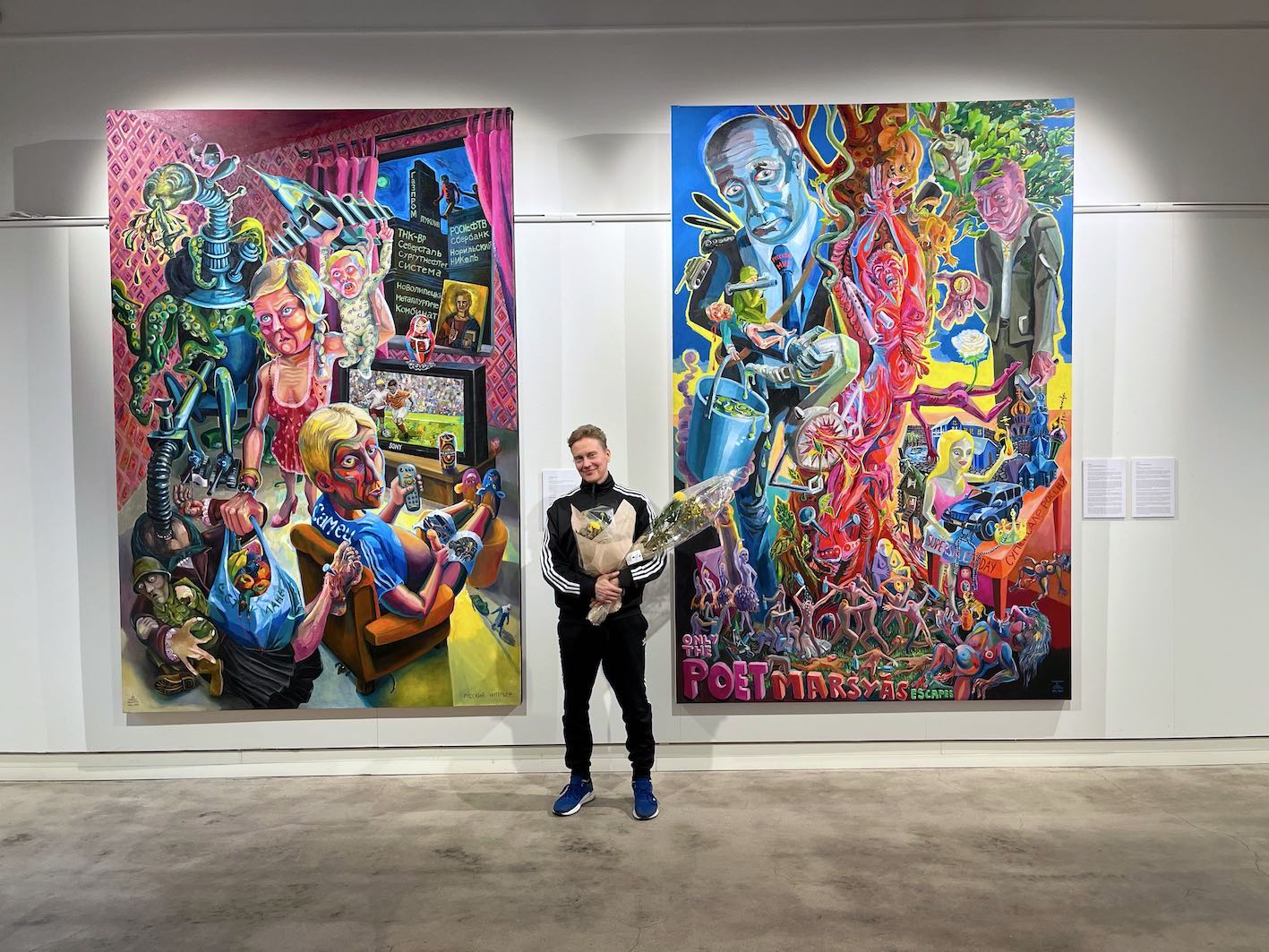
Cultural Centre Caisa's Gallery, 2023.

Cultural Centre Caisa's Gallery, 2023.
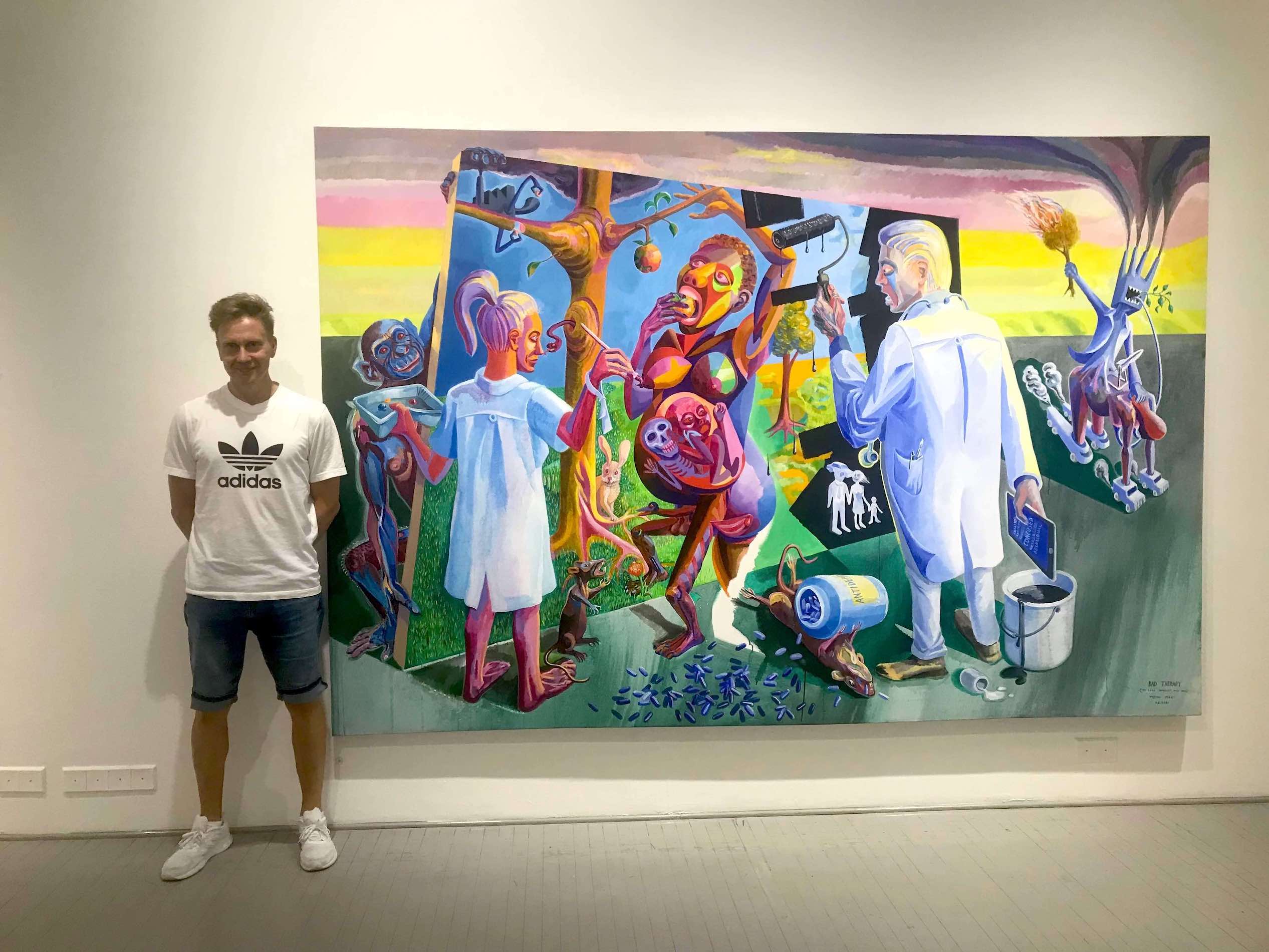
Gallery
of the Finnish Painters' Union, 2021.
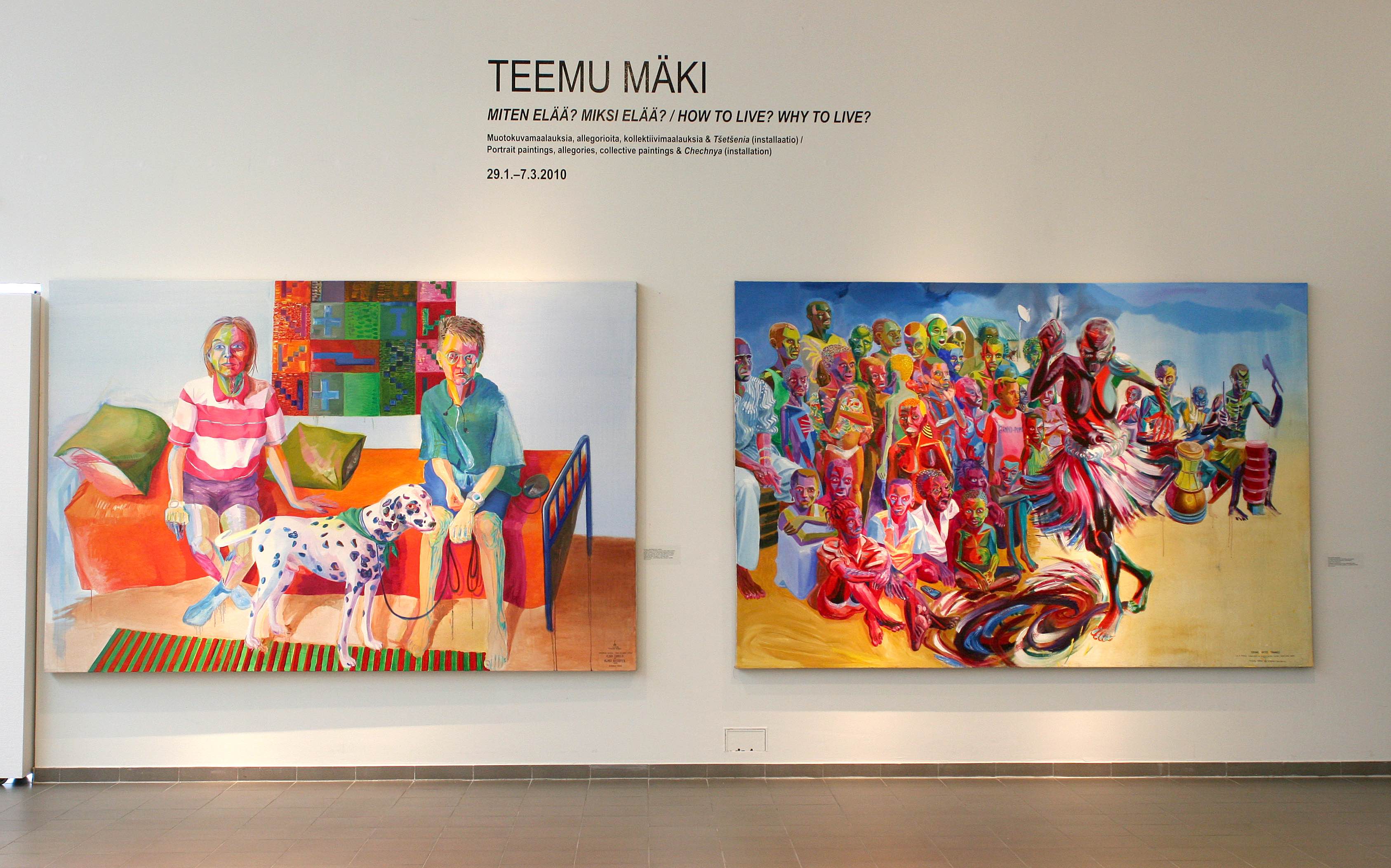
Kemi Art Museum,
2010.
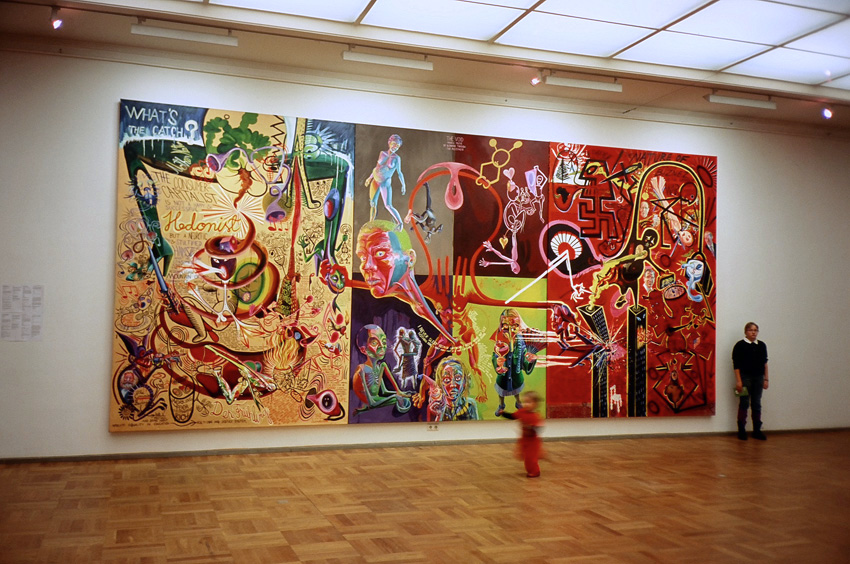
Kunstihoone Tallinn /
Tallin Art Hall, 2008.
